Interviews with Experts
10 Groundbreaking Strategies for Integrated Pest Management in Trees
You may have encountered some challenges with maintaining the health of your trees due to various pests and insects. However, there are innovative and effective strategies that can revolutionize the way you approach integrated pest management in trees.
These 10 groundbreaking techniques have the potential to significantly enhance the resilience and vitality of your trees, providing a sustainable and long-term solution to pest control.
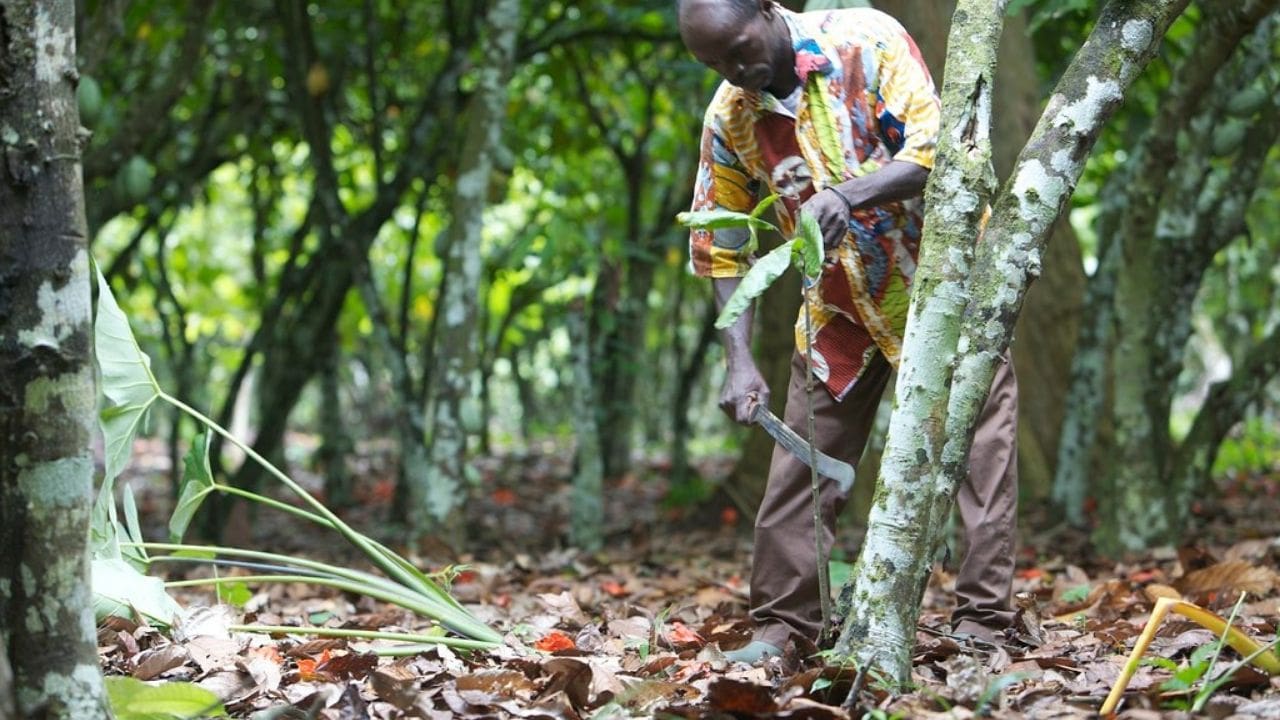

Key Takeaways
- Regular monitoring and inspection of trees are crucial for early detection and intervention in pest management.
- Cultural controls, such as pruning and mulching, can help reduce pest populations and improve tree health.
- Mechanical controls, like tree banding and proper mulch application, can prevent pest infestations in trees.
- Biological controls, such as beneficial insects and predatory nematodes, offer safe and environmentally friendly approaches to pest management.
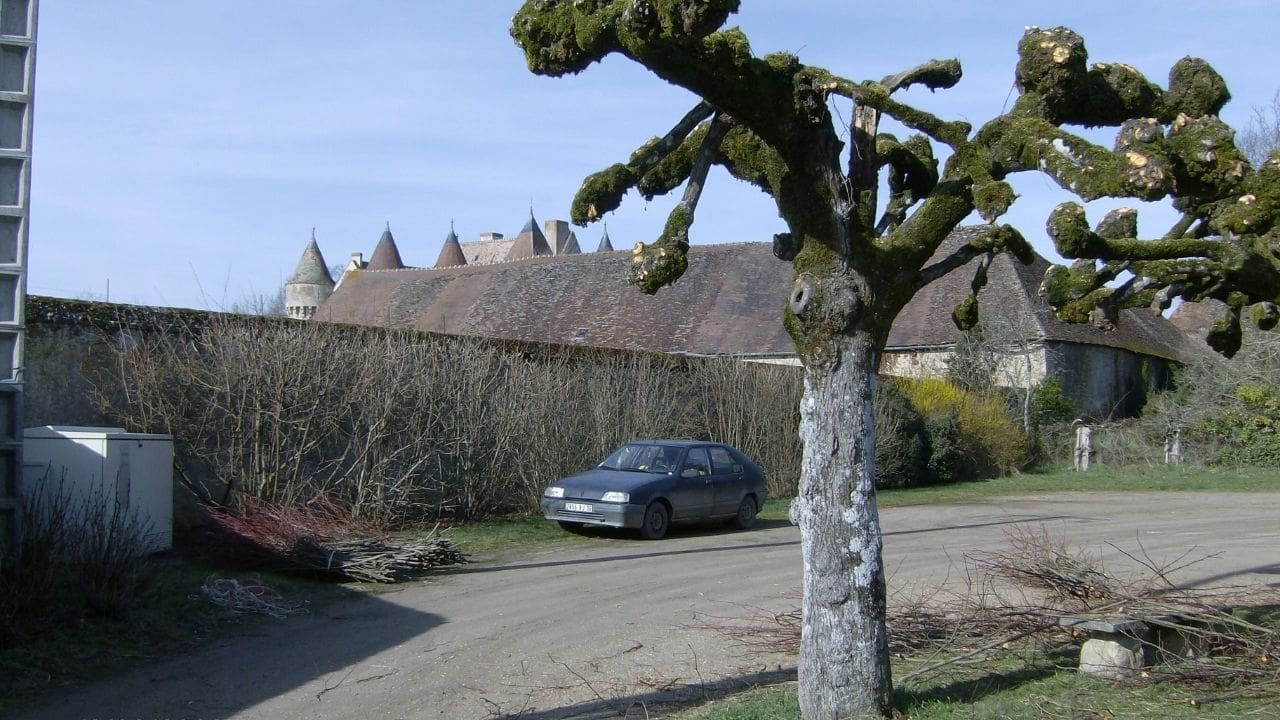

Monitoring
To effectively implement integrated pest management in trees, monitoring for signs of pest infestations and tree health is essential for early detection and intervention.
Regularly inspect your trees for any unusual signs such as wilting leaves, unusual spots, or abnormal growth patterns. These could indicate the presence of pests or diseases that require immediate attention. Additionally, keep an eye out for insect activity such as holes in the leaves, webs, or the presence of larvae.
Monitoring the overall health of your trees is also crucial. Look for signs of stress such as leaf discoloration, early leaf drop, or stunted growth. By closely observing your trees, you can identify potential issues early on and take the necessary steps to address them. Utilize tools such as binoculars to inspect the canopy for any signs of damage or irregularities.
Keeping detailed records of your monitoring efforts will help track any changes over time and provide valuable information for making informed decisions regarding pest management strategies.
Regular and thorough monitoring is key to maintaining the health and safety of your trees.
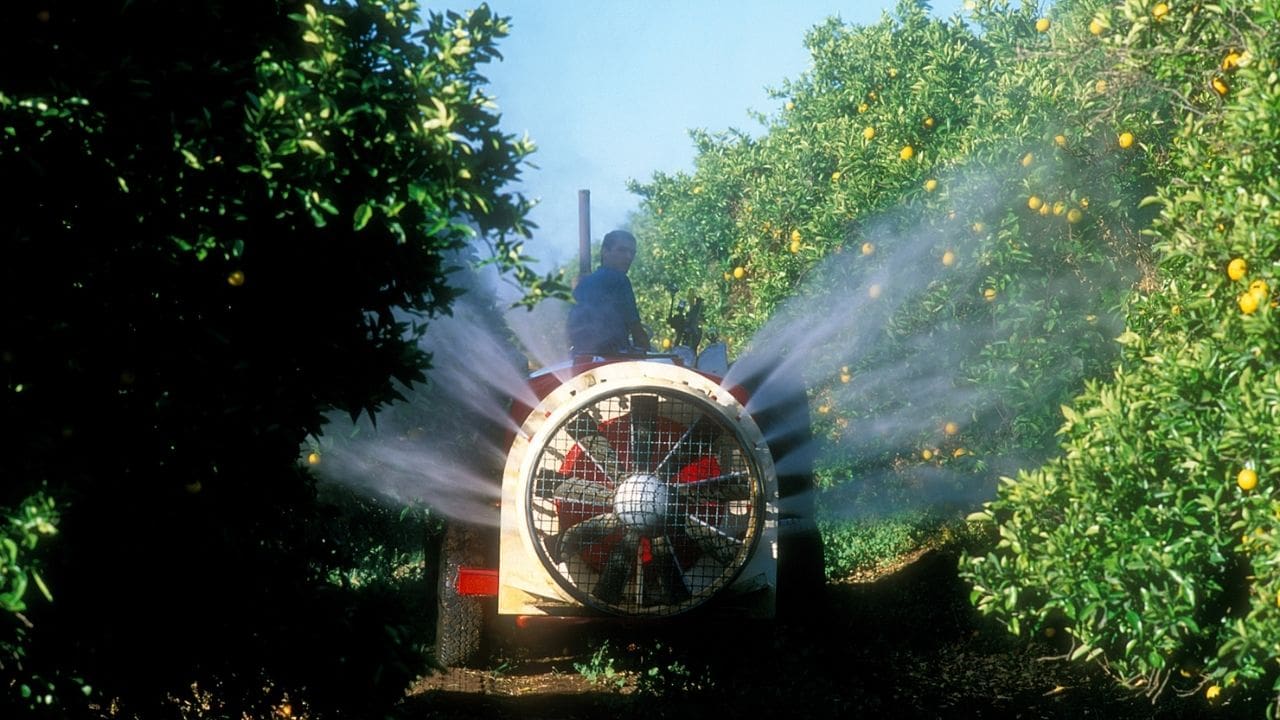

Cultural Controls
Regularly inspecting your trees for signs of pest infestations and tree health can be complemented with cultural controls, which encompass various management practices to reduce pest populations and promote tree resilience. Cultural controls are an essential component of integrated pest management and can significantly contribute to the overall health of your trees.
Here are some key cultural control strategies to consider:
- Pruning: Regular pruning can help remove infested or diseased branches, improving air circulation and reducing pest habitats.
- Mulching: Applying mulch around the base of trees can help conserve soil moisture, regulate soil temperature, and discourage weed growth, thereby promoting tree vigor and resilience against pests.
- Sanitation: Removing fallen leaves, fruits, and other debris can help eliminate overwintering sites for pests and reduce the spread of diseases.
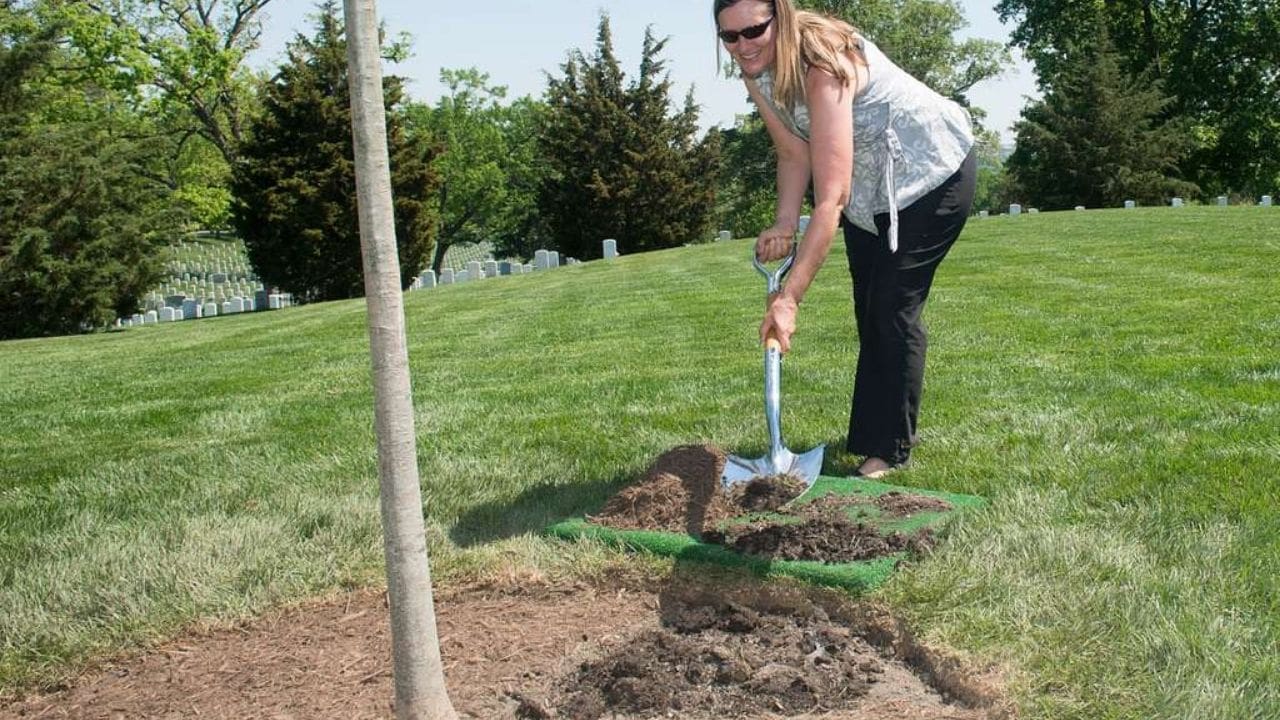

Mechanical Controls
When managing pests in trees, mechanical controls can be effective in preventing infestations.
Tree banding, mulching, and pruning are practical approaches to minimize pest populations and reduce their impact on tree health.
Tree Banding
Banding trees with sticky barriers is an effective mechanical control method for preventing crawling insects from reaching the foliage. This technique involves wrapping a sticky material around the trunk of the tree to create a barrier that traps pests.
Here are some key points to consider when using tree banding for pest management:
- Ensure the sticky barrier is securely fastened around the trunk to prevent insects from bypassing it.
- Regularly monitor and replace the sticky barrier to maintain its effectiveness.
- Use caution when applying and handling sticky materials to avoid skin contact and ensure the safety of beneficial insects.
Tree banding can be a valuable component of an integrated pest management plan, providing a non-toxic and targeted approach to controlling crawling insect pests while minimizing risks to the environment and human health.
Mulching
Consider using a layer of organic mulch around the base of the tree to provide mechanical control against weeds and help retain soil moisture. Mulching not only suppresses weed growth by blocking sunlight but also reduces competition for water and nutrients.
Apply a 2-4 inch layer of mulch, keeping it a few inches away from the tree trunk to prevent moisture-related issues. Organic mulches like wood chips, shredded bark, or compost are recommended as they gradually decompose, enriching the soil. Ensure the mulch is spread evenly to avoid creating a habitat for pests or diseases.
Avoid piling mulch against the tree trunk, as this can lead to moisture retention and potential decay. Regularly inspect the mulch layer and replenish as needed to maintain its effectiveness in weed control and moisture retention.
Pruning
To effectively manage pests in trees, utilizing pruning as a mechanical control method can complement the use of organic mulch for weed suppression and moisture retention. When employing pruning for integrated pest management, consider the following:
- Sanitation: Regularly remove dead or diseased branches to prevent the spread of pests and diseases.
- Thinning: Properly space and thin branches to improve air circulation and sunlight penetration, which can enhance the tree’s natural defenses against pests.
- Training: Prune for proper tree structure, which can reduce potential pest habitats and minimize vulnerability to infestations.
Always prioritize safety when pruning trees. Use sharp, clean tools, and consider consulting a certified arborist for large or complex pruning tasks. Additionally, be mindful of potential hazards such as falling branches and take appropriate precautions.


Biological Controls
You can utilize beneficial insects, predatory nematodes, and microbial agents as biological controls to manage pests in trees.
Beneficial insects such as ladybugs and lacewings can help to naturally control pest populations.
Predatory nematodes are microscopic worms that feed on insect larvae in the soil, reducing pest populations.
Microbial agents, such as certain bacteria and fungi, can be used to target specific pests while minimizing harm to beneficial organisms.
Beneficial Insects
Beneficial insects, such as ladybugs and lacewings, play a crucial role in the biological control of pests in trees by preying on harmful insects and helping to maintain a balanced ecosystem. These natural predators contribute to the reduction of pest populations, minimizing the need for chemical interventions. When these beneficial insects are present in tree environments, they actively seek out and consume pests, providing an effective and sustainable method of pest management. Additionally, these insects support overall tree health by minimizing the spread of diseases carried by pests.
Key Benefits of Beneficial Insects:
- Natural predators of harmful insects
- Minimize the need for chemical interventions
- Support overall tree health through pest and disease control
Predatory Nematodes
Predatory nematodes, when introduced into tree environments, actively seek out and consume pest insects, providing an effective biological control method for managing pest populations. These microscopic roundworms are safe for humans, animals, and plants, making them an ideal solution for integrated pest management in trees.
To maximize their effectiveness, it’s essential to apply predatory nematodes at the right time and under suitable environmental conditions. They thrive in moist soil and moderate temperatures, so ensure that the application coincides with these factors for optimal results.
When utilizing predatory nematodes, it’s crucial to follow the application instructions meticulously to ensure that the correct nematode species is used and that they’re applied at the recommended rate.
Microbial Agents
Using microbial agents as biological controls can effectively manage pest populations in tree environments. Microbial agents, such as bacteria and fungi, offer a safe and environmentally friendly approach to pest management.
When considering the use of microbial agents, it’s important to:
- Select the right microbial agent for the specific pest species and tree environment.
- Apply the microbial agent at the optimal time to maximize its effectiveness.
- Monitor the impact of the microbial agent on pest populations and tree health to adjust management strategies as needed.
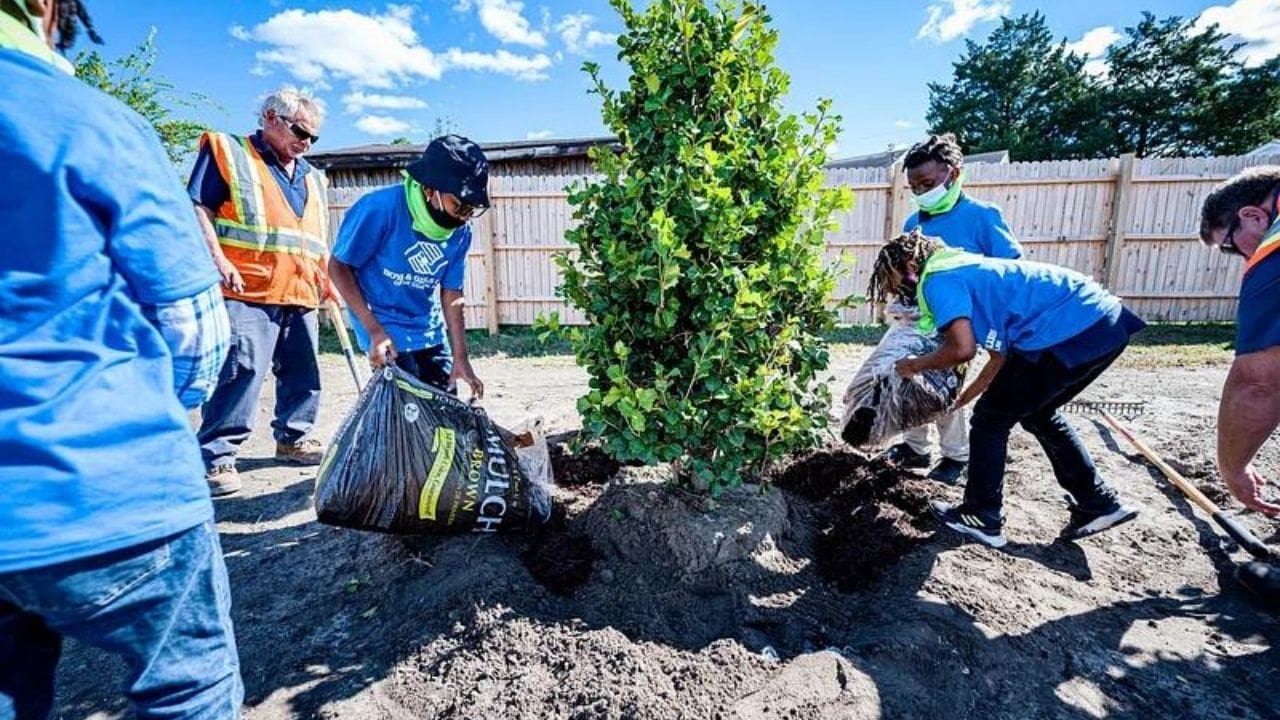

Chemical Controls
To control pests in trees, chemical treatments may be employed as a part of an integrated pest management program. Chemical controls, such as insecticides and fungicides, can be effective in managing pest populations and preventing the spread of diseases.
When using chemical controls, it’s crucial to prioritize safety for both the applicator and the environment. Always carefully read and follow the instructions on the product label. Use personal protective equipment, including gloves, goggles, and a respirator if required. Apply chemicals during calm weather to prevent drift and minimize exposure to unintended targets.
Additionally, consider the potential impact on non-target organisms, such as beneficial insects and wildlife. Properly store and dispose of chemical containers to prevent contamination of soil and water sources. Integrated pest management emphasizes the use of chemical controls as part of a holistic approach that also includes cultural, biological, and physical management strategies.


Habitat Manipulation
When considering habitat manipulation as part of an integrated pest management program in trees, it’s essential to understand how altering the environment can complement chemical controls and other pest management strategies. Habitat manipulation involves modifying the tree’s surroundings to create an unfavorable environment for pests and encourage beneficial organisms. This approach is a valuable tool in an integrated pest management program as it can disrupt the pest’s lifecycle and reduce their populations without relying solely on chemical treatments.
- Diversifying Plant Species: Introducing a variety of plant species around the trees can provide a more diverse habitat for beneficial insects, birds, and other natural enemies of pests. This diversity can create a balanced ecosystem that helps control pest populations naturally.
- Managing Mulch and Groundcover: Properly managing mulch and groundcover can help regulate soil moisture and temperature, reducing conditions favorable for pests while promoting the growth of beneficial soil organisms.
- Creating Physical Barriers: Implementing physical barriers such as tree wraps or barriers can protect trees from pests and also limit their movement, thereby reducing infestations.
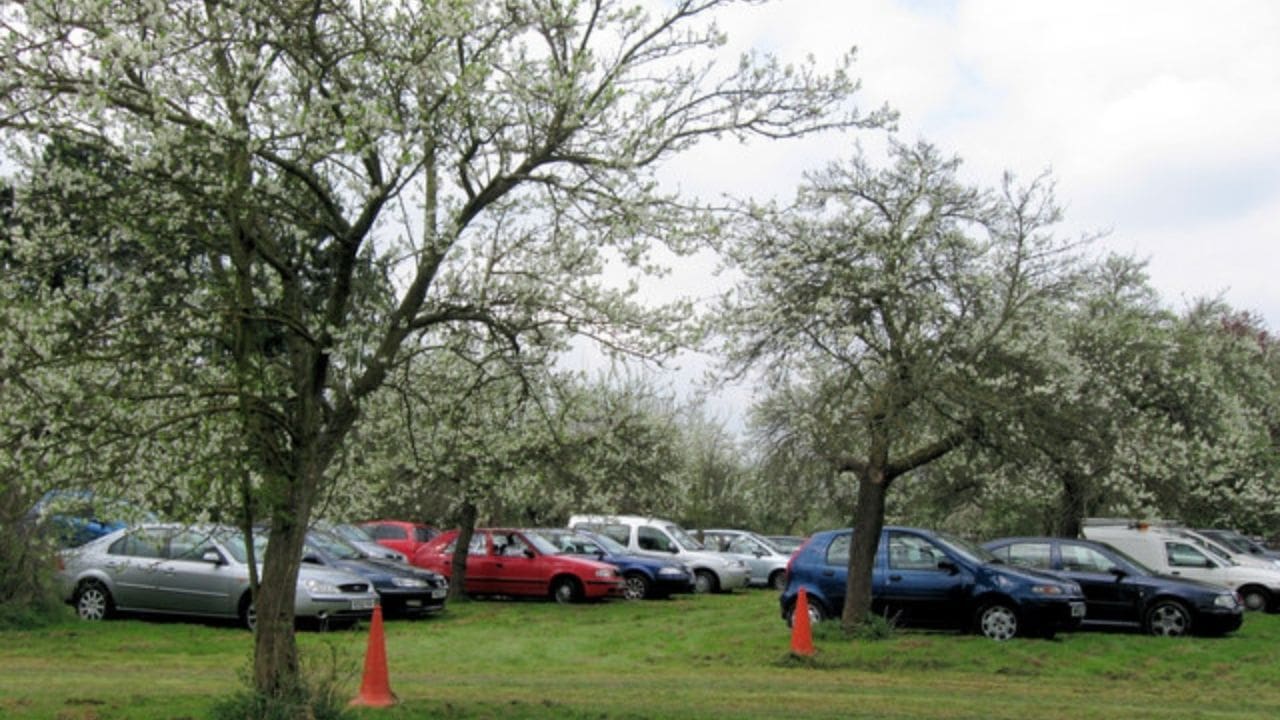

Resistant Varieties
Select tree species with natural resistance to common pests for a more sustainable approach to pest management in your integrated pest management program. Resistant varieties are a valuable component of a comprehensive pest management strategy. When choosing tree species, consider those that have demonstrated natural resistance to prevalent pests in your region. By doing so, you can reduce the reliance on chemical treatments and minimize potential harm to non-target organisms. Resistant varieties can decrease the need for pesticide applications, thereby promoting a safer environment for both humans and beneficial organisms in the ecosystem.
When selecting resistant varieties, it’s essential to consider the specific pests and diseases that are prevalent in your area. By choosing tree species that are naturally resistant to these threats, you can effectively mitigate pest issues and reduce the need for intervention. Additionally, incorporating resistant varieties into your landscape can contribute to the long-term health and vitality of your trees, ultimately reducing the overall maintenance requirements.
Consult with local arborists, horticulturists, or agricultural extension services to identify tree species with natural resistance to common pests in your area. By incorporating resistant varieties into your integrated pest management program, you can promote sustainable, environmentally friendly pest management practices while maintaining the health and beauty of your trees.
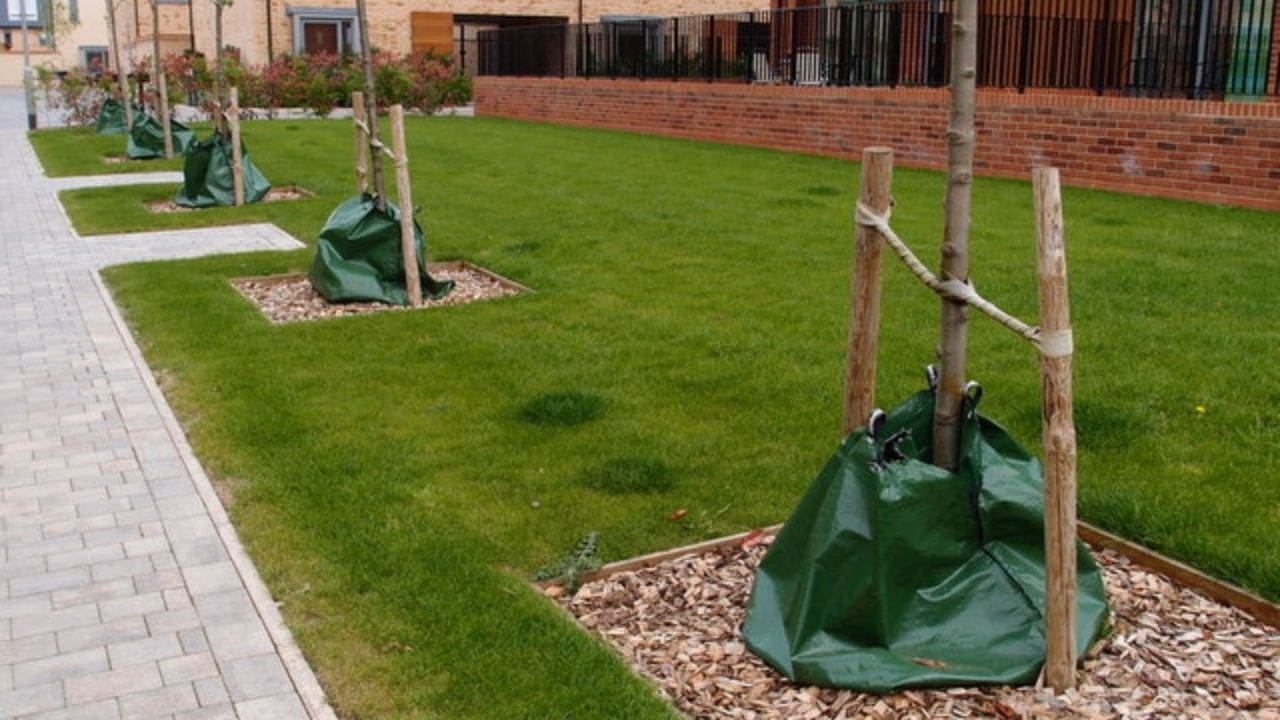

Pheromone Traps
Pheromone traps are an effective tool for monitoring and managing insect populations in trees. These traps work by emitting synthetic pheromones that attract specific insects, allowing you to monitor their presence and population levels.
Proper placement of pheromone traps is crucial for maximizing their effectiveness in controlling pest populations.
Pheromone Trap Effectiveness
For effective monitoring and control of pests in trees, pheromone traps provide an invaluable tool for detecting and managing infestations. When using pheromone traps, it’s important to consider the following:
- Placement: Position the traps strategically throughout the tree canopy to effectively lure and capture pests.
- Monitoring: Regularly inspect the traps to assess pest population levels and determine the need for further pest management actions.
- Maintenance: Ensure that the traps are properly maintained and baited according to manufacturer guidelines to maximize their effectiveness.
Pheromone Trap Placement
When considering the placement of pheromone traps for effective monitoring and control of pests in trees, it’s crucial to strategically position the traps throughout the tree canopy to maximize their ability to lure and capture pests.
Place the traps at eye level to make monitoring and maintenance more convenient.
Ensure that traps are evenly distributed throughout the canopy, especially in areas where pest activity is suspected or known to occur. By placing traps in a grid pattern, you can increase the likelihood of intercepting pests and accurately monitoring their population.
However, avoid placing traps in direct sunlight, as excessive heat can degrade the pheromone attractants.
Additionally, regularly check the traps for captured pests and replace the pheromone lures according to the manufacturer’s recommendations to maintain their effectiveness.
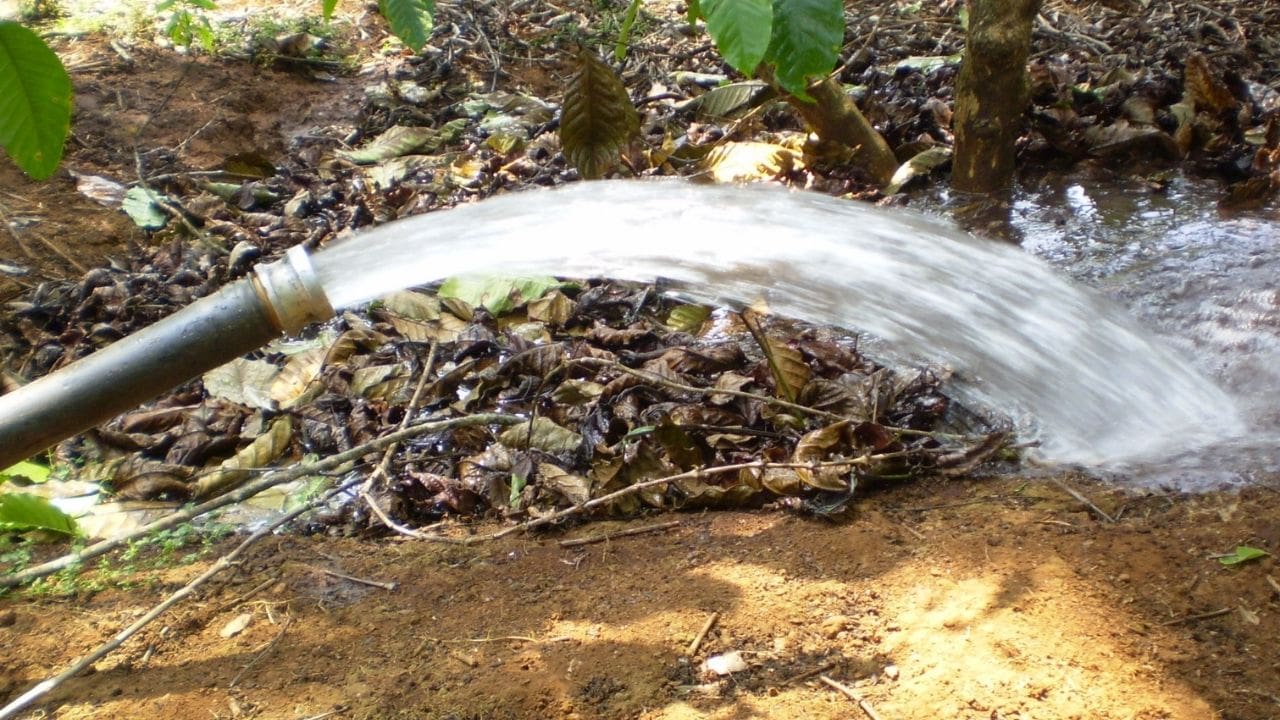

Soil Health
Maintaining optimal soil health is crucial for the successful implementation of integrated pest management practices in trees. Healthy soil provides the foundation for strong, resilient trees that are better able to withstand pest pressures.
Here are key strategies to ensure soil health:
- Soil Testing: Regularly assess the pH levels and nutrient content of the soil to determine if any amendments are needed for optimal tree growth.
- Mulching: Use organic mulch around the base of trees to regulate soil temperature, retain moisture, and suppress weed growth. This promotes a healthy soil environment for tree roots.
- Aeration: Compacted soil can restrict root growth and reduce oxygen levels. Periodic aeration helps to alleviate compaction, improve water infiltration, and enhance nutrient uptake by the trees.
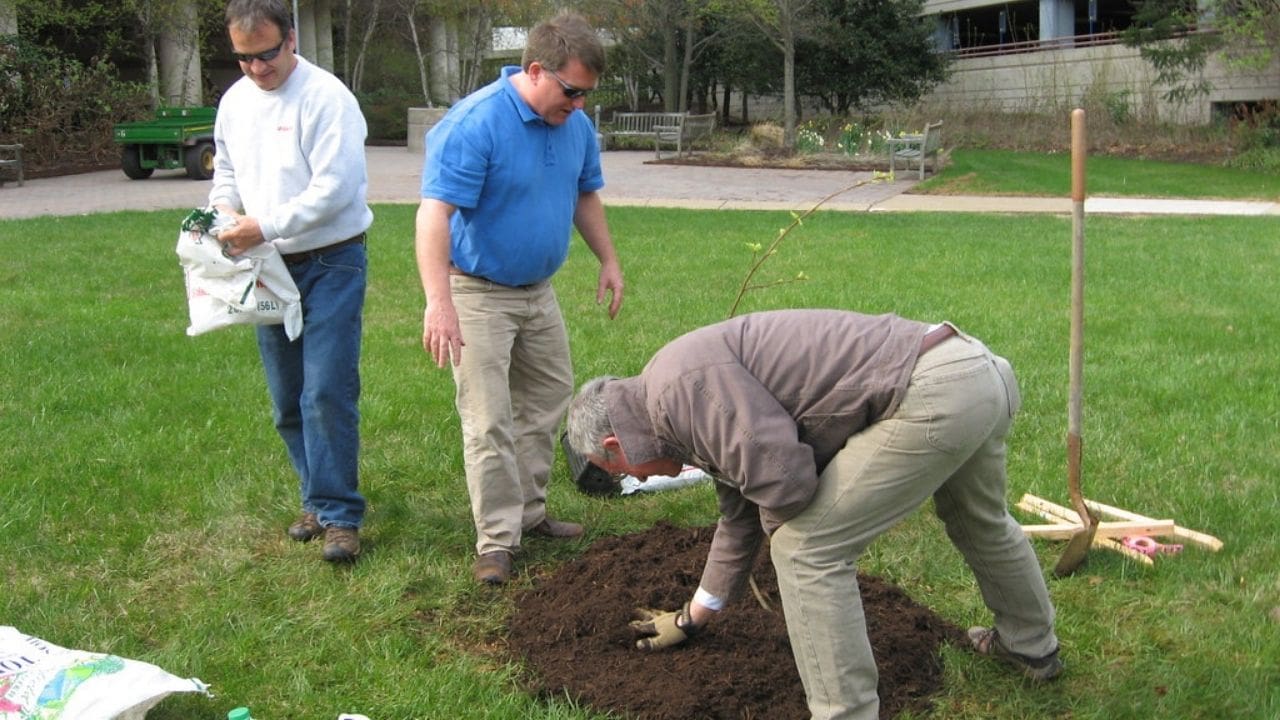

Pruning
Regular pruning promotes tree health and helps manage pest infestations effectively. When pruning, it’s essential to remove dead or diseased branches promptly to prevent the spread of pests and diseases. Start by inspecting the tree for any signs of infestation or infection, such as abnormal leaf discoloration or the presence of pests. Use sharp, clean pruning tools to make precise cuts and avoid causing unnecessary damage to the tree.
Prune away any branches that are crossing or rubbing against each other, as these can create entry points for pests and compromise the tree’s structural integrity.
Additionally, consider the timing of pruning to minimize stress on the tree and reduce the risk of attracting pests. For example, avoid heavy pruning during the peak of the growing season, as this can make the tree more susceptible to infestations. Instead, aim to prune during the dormant season or early spring to promote rapid healing and minimize the impact on the tree’s overall health.
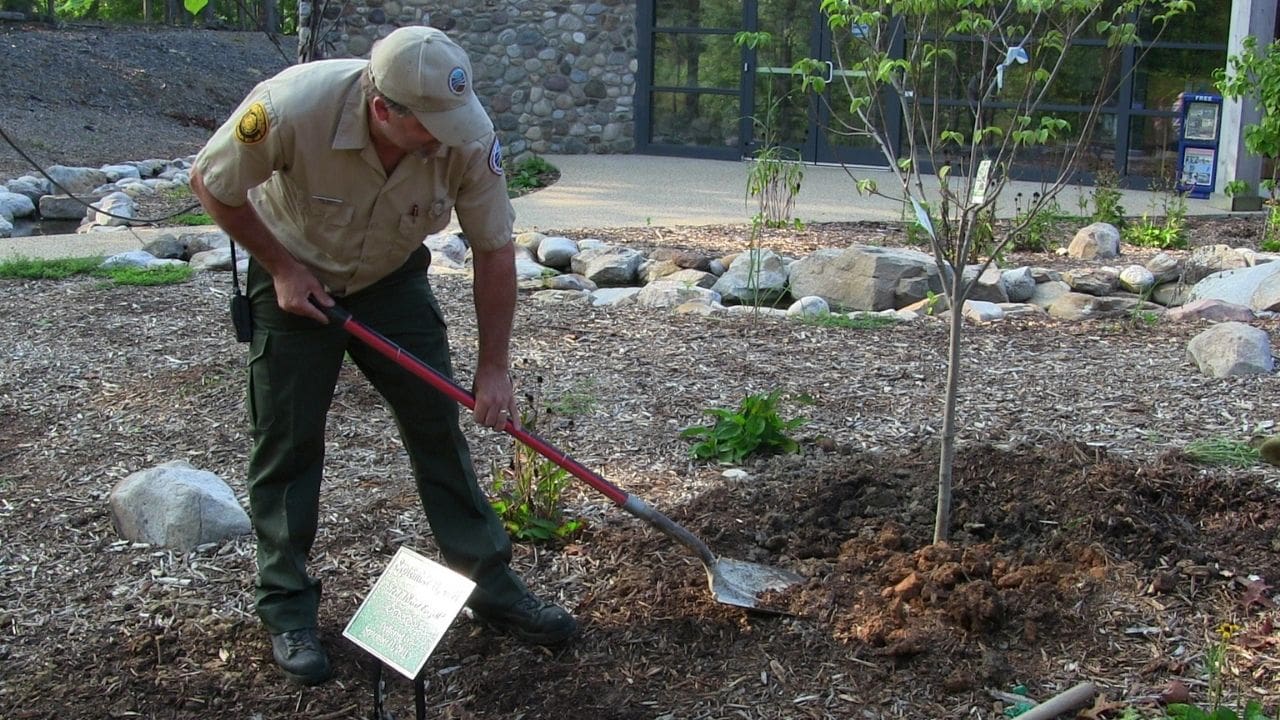

Frequently Asked Questions
How Can I Effectively Integrate Multiple Pest Management Strategies to Ensure Long-Term Success in Tree Care?
You can effectively integrate multiple pest management strategies for long-term success in tree care by combining cultural, biological, and chemical control methods. Regular monitoring and timely interventions are crucial for preventing pest damage and maintaining tree health.
What Are Some Innovative Technologies or Tools That Can Aid in Monitoring and Controlling Pests in Trees?
You can explore innovative technologies like pheromone traps, drones for aerial monitoring, and tree injection systems. These tools aid in early detection and targeted control of pests, contributing to effective tree care and long-term success.
Are There Any Specific Cultural Practices That Can Be Implemented to Prevent Pest Infestations in Trees?
Implementing proper pruning techniques and maintaining tree health through adequate watering and fertilization can significantly prevent pest infestations. Additionally, promoting biodiversity in the surrounding landscape and using resistant tree species can further deter pests.
How Can I Determine the Most Suitable Biological Control Agents for the Pests Affecting My Trees?
How can you determine the most suitable biological control agents for the pests affecting your trees? Research and identify the specific pests, then consult with experts to select the most effective biological control agents tailored to your tree species and local environment.
What Are the Potential Long-Term Impacts of Chemical Controls on the Overall Health and Biodiversity of Tree Ecosystems?
Using chemical controls can have potential long-term impacts on the overall health and biodiversity of tree ecosystems. It’s important to carefully consider the environmental and ecological consequences before implementing any chemical pest control methods.


Hello there! I’m Logan Foster, the green-thumbed social media marketer behind the vibrant world of 1800TreeGuy.com. With roots firmly planted in arboriculture, I’ve branched out to help clients cultivate their dream outdoor spaces, one leafy canopy at a time. My knack for nurturing nature is more than a profession—it’s a way of life.
When I’m not talking trees and teaching the art of arboreal care, you can find me cheering on the Bulldogs—my alma mater’s pride and my forever team. My environmental studies there didn’t just teach me about ecosystems; they instilled a lifelong passion for protecting our planet.
Off the clock, I’m an adventurer at heart. Whether it’s trekking the Appalachian trails, pedaling down a mountain path, or crafting guides to share the wonders of the wild, I’m happiest with soil under my nails and the sun on my face. And let’s not forget Yoda, my pug sidekick. He may not have mastered the art of stillness, but his joyful grins are my daily dose of happiness.
I’m all about making connections—between people and the great outdoors and between my clients and their ideal landscape visions. My approach is personal; every tree has a story, and every garden reflects its caretaker.
If you want to green your scene or share in my outdoor escapades, give me a shout on Instagram or Facebook. Let’s cultivate a conversation and grow a community rooted in a love for the lush life.















